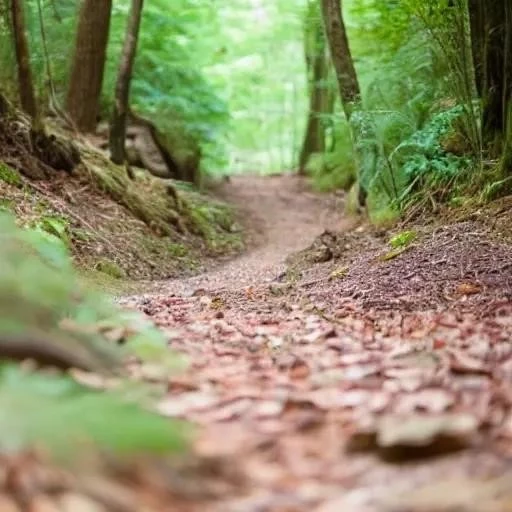In a world increasingly blurring the lines between urban chic and rugged utility, a fascinating question frequently emerges from the style-conscious adventurer: are chukka boots practical for hiking? These undeniably stylish, ankle-height boots, renowned for their comfort and versatility in metropolitan landscapes, have long been a staple in casual and semi-formal wardrobes. Yet, their potential transition from city pavements to challenging wilderness trails sparks considerable debate among outdoor enthusiasts and fashion connoisseurs alike. The allure of a single, multi-functional pair of footwear is profoundly appealing, promising an elegant solution to the perennial packing dilemma.
For decades, dedicated hiking boots, with their formidable ankle support, aggressive traction, and robust waterproofing, have stood as the undisputed champions of the trail. However, the modern chukka boot, often crafted from resilient leathers or suedes and occasionally featuring more substantial soles, presents a compelling, albeit unconventional, alternative. This article delves deeply into whether these iconic boots, traditionally favored for their relaxed sophistication, possess the inherent attributes—or adaptable potential—to genuinely serve as a reliable companion on your next outdoor expedition, challenging preconceived notions and exploring the evolving landscape of adventure footwear.
| Feature | Chukka Boots (Typical) | Traditional Hiking Boots (Typical) | Hiking Suitability |
|---|---|---|---|
| Primary Purpose | Casual wear, urban environments, light walking | Trail hiking, backpacking, rugged terrain | Limited |
| Ankle Support | Minimal to moderate (just above ankle) | High to very high (well above ankle, stiff) | Poor for challenging trails |
| Sole Grip & Traction | Generally smooth, modest tread for urban surfaces | Aggressive, multi-directional lugs for varied terrain | Inadequate for slippery or uneven ground |
| Waterproofing | Rarely, unless specifically treated or GORE-TEX lined | Often built-in with membranes (e.g., GORE-TEX) | Very low resistance to moisture |
| Material Durability | Leather/suede, susceptible to scuffs and moisture damage | Rugged leather, synthetics, reinforced for abrasion | Insufficient for sustained rough use |
| Weight | Light to moderate | Moderate to heavy (depending on type) | Advantage for light use, but compromises elsewhere |
| Ideal Use Case | City walks, casual outings, office wear | Day hikes, multi-day treks, mountaineering | Only for very short, flat, dry, well-maintained paths |
The Aesthetic Appeal vs. The Practical Imperative
Chukka boots, with their distinctive two or three eyelet lacing and ankle-height silhouette, are undeniably charming. Originating from desert boots worn by British soldiers in World War II, their design prioritizes comfort and freedom of movement over rigorous protection. This heritage makes them incredibly versatile for daily wear, pairing effortlessly with jeans or chinos. However, when considering their application to the demanding world of hiking, a critical shift in perspective is absolutely necessary. Aesthetically pleasing as they are, the wild demands more than just good looks; it requires unwavering performance and crucial safety features designed to prevent injury and enhance endurance.
Expert opinions consistently highlight the fundamental differences between fashion-forward footwear and purpose-built outdoor gear. Dr; Eleanor Vance, a leading podiatrist specializing in sports medicine, often cautions against using improper footwear for strenuous activities. “While a chukka might feel comfortable on a gentle nature walk, its lack of robust ankle support and insufficient sole rigidity dramatically increases the risk of sprains and instability on uneven trails,” she explains. “Navigating root-strewn paths or slippery inclines without adequate traction and foot protection is akin to bringing a sleek sports car to a rally race; it looks fantastic, but it’s ill-equipped for the task at hand.”
Where Chukka Boots Fall Short: The Unvarnished Truth
Despite their growing popularity and some manufacturers introducing more rugged versions, several core limitations prevent most chukka boots from being truly practical for serious hiking. Firstly, the most significant drawback is their minimal ankle support. Unlike traditional hiking boots, which often feature stiff collars and reinforced structures extending well above the ankle, chukkas offer little to no lateral stability. This deficiency can lead to dangerous ankle twists and turns, especially when traversing rocky, root-laden, or uneven terrain. A single misstep on a treacherous descent could transform a pleasant hike into a painful ordeal, requiring immediate medical attention.
Secondly, sole grip and traction are crucially different. Standard chukka soles are designed for urban environments, offering sufficient grip on concrete or paved paths but lacking the aggressive lug patterns and specialized rubber compounds required to bite into loose gravel, mud, or wet rocks. Imagine trying to ascend a damp, mossy slope in shoes designed for a coffee shop; the potential for slipping is alarmingly high. Moreover, the durability of materials is often an issue. Many chukkas are made from soft suedes or leathers that, while comfortable and stylish, are not inherently resistant to the abrasions, punctures, and water exposure commonly encountered on trails. Constant exposure to moisture and rough surfaces can quickly degrade these materials, compromising the boot’s structural integrity and your comfort.
The Niche for Chukka Adventures: A Glimmer of Hope?
While generally ill-suited for challenging expeditions, there’s a nuanced discussion to be had about specific, very light hiking scenarios where certain chukka boots might find a place. For instance, on exceptionally well-maintained, flat, dry dirt paths or paved nature trails, a more robustly constructed chukka—perhaps one featuring a slightly thicker, lugged rubber sole and treated, water-resistant leather—could suffice for a short, leisurely stroll. Think of a casual walk in a local park or a botanic garden, rather than an ascent of a mountain peak. Some specialized outdoor brands are even beginning to infuse chukka-inspired aesthetics with legitimate outdoor performance features, like improved arch support, cushioned midsoles, and subtly enhanced traction, blurring the traditional lines.
These emerging hybrids, driven by consumer demand for versatile, multi-context footwear, represent an optimistic, forward-looking trend. By integrating insights from advanced material science and ergonomic design, manufacturers are exploring how to imbue stylish designs with genuine outdoor capabilities. However, even these advanced iterations are unlikely to replace dedicated hiking boots for serious adventurers. They offer a compromise, a bridge for those seeking a touch of trail readiness without fully committing to the often bulky aesthetic of traditional hiking gear. They serve as a testament to innovation, proving that even classic designs can evolve, provided the core performance criteria are met. The future promises exciting developments, potentially allowing us to enjoy the best of both worlds: uncompromised style and reliable, trail-ready functionality.
The Prudent Path Forward: Choosing Wisely
Ultimately, the question of whether chukka boots are practical for hiking receives a nuanced answer: rarely for challenging trails, but potentially for the most gentle, undemanding paths. For any serious outdoor endeavor involving varied terrain, significant distances, or unpredictable weather, investing in purpose-built hiking footwear remains a remarkably effective and crucially safer choice. These specialized boots are engineered with your safety, comfort, and performance in mind, offering the essential support, grip, and protection that standard chukkas simply cannot provide. While the desire for a single, stylish solution is understandable, compromising on footwear for the wilderness is a risk that seasoned adventurers rarely take.
As you plan your next adventure, consider the specific demands of your chosen trail. Are you embarking on a leisurely walk through a city park, or are you preparing to conquer rugged, untamed landscapes? The answer will dictate your footwear. Embrace the future of versatile design, but always prioritize function over form when your well-being is at stake. The right boots empower you to explore with confidence, ensuring that your journey is filled with awe-inspiring moments, not avoidable discomfort or injury. So, while your beloved chukkas remain perfect for coffee shop outings and urban explorations, let the dedicated hiking boots guide you safely through the wild, ensuring every step on the path less traveled is a secure one.






